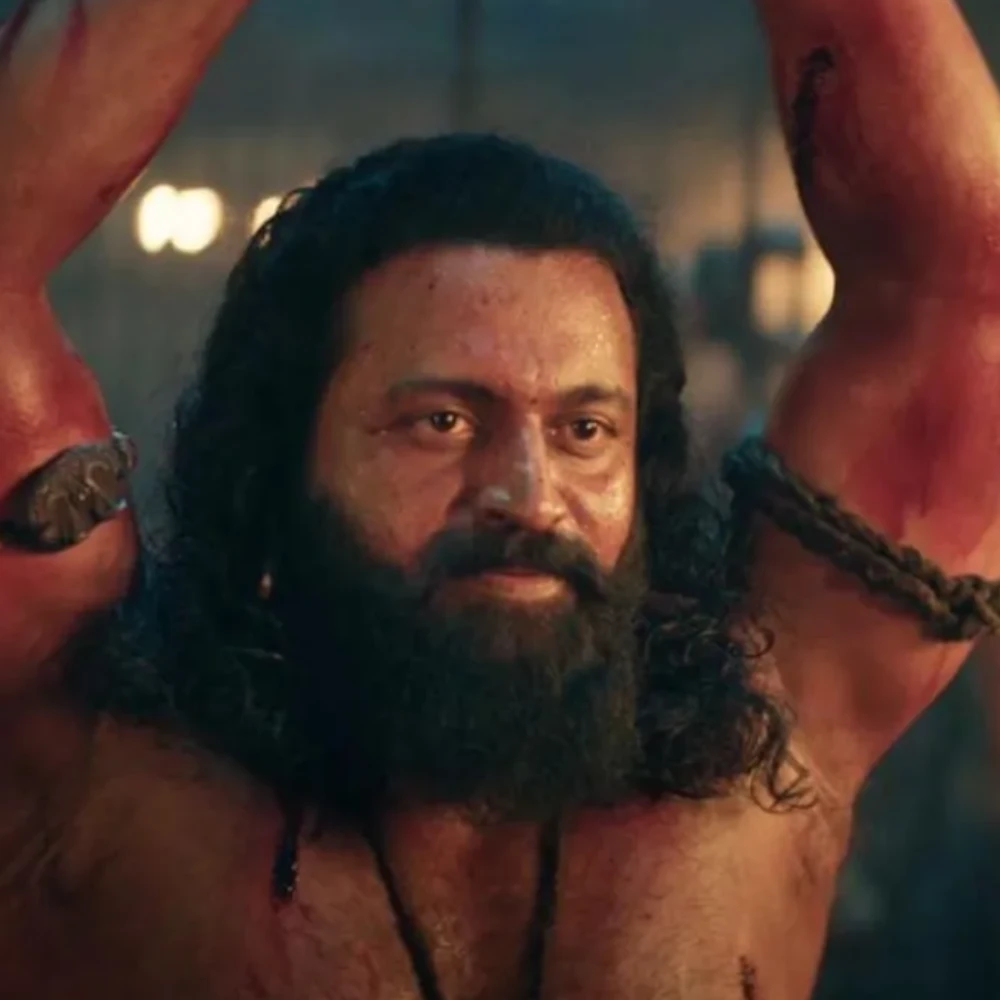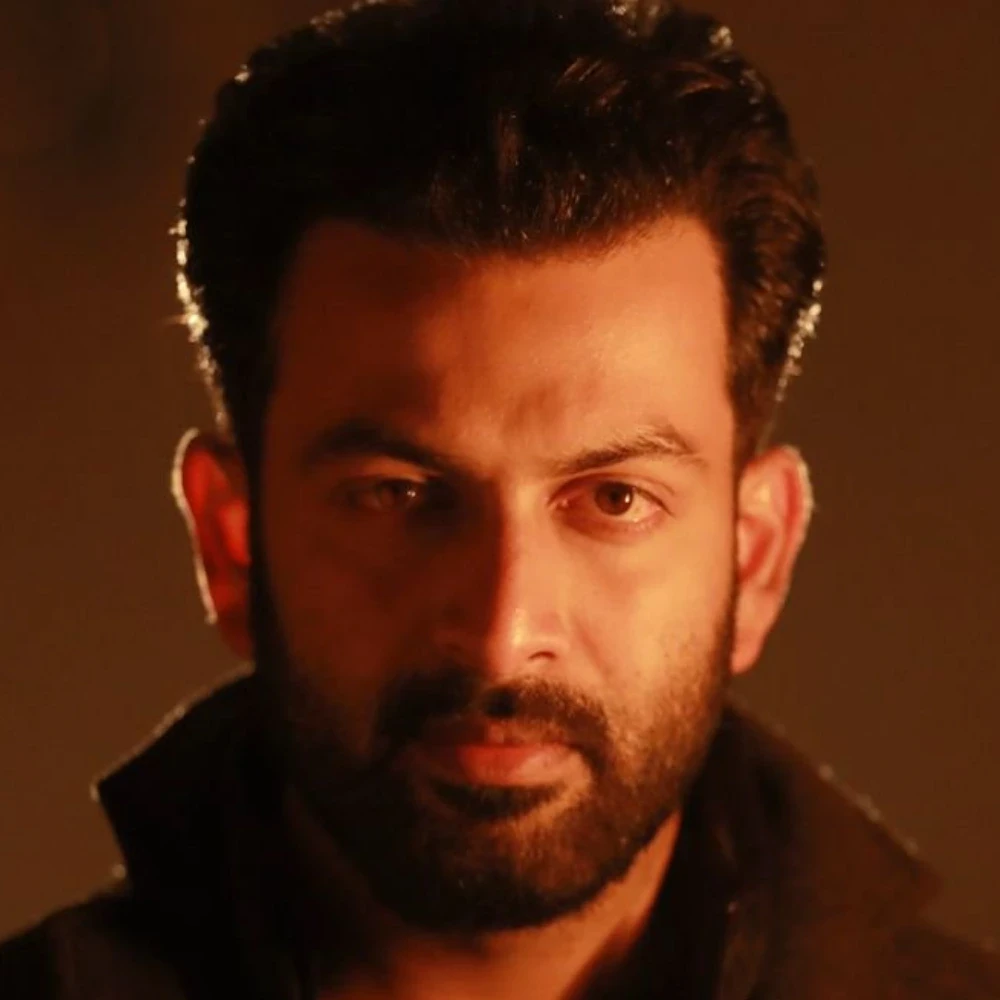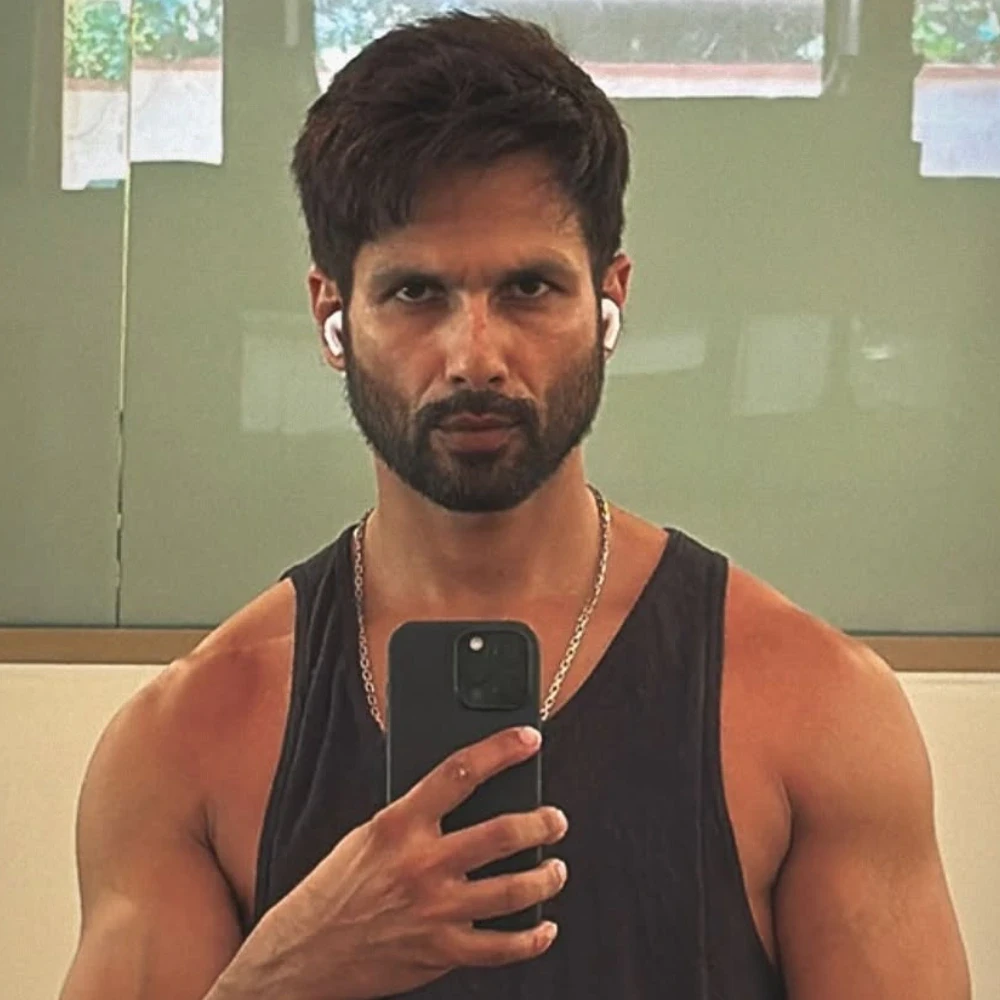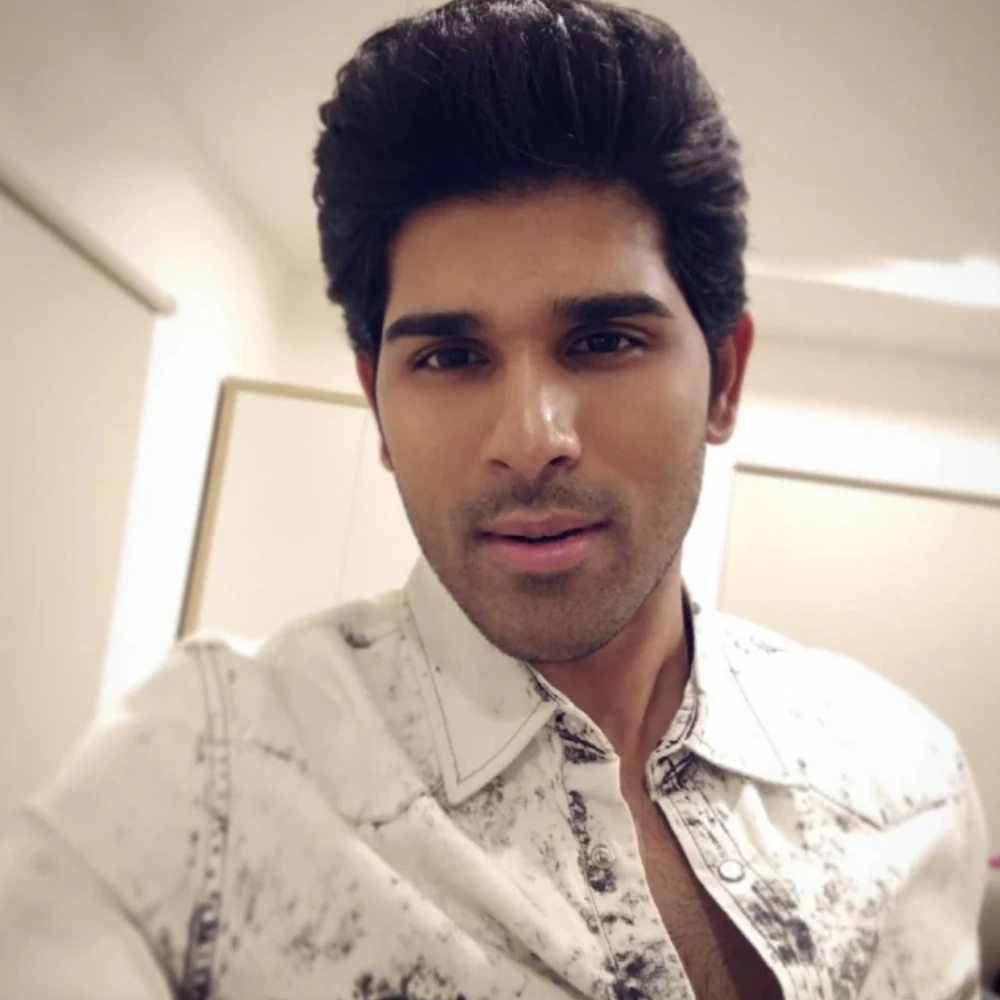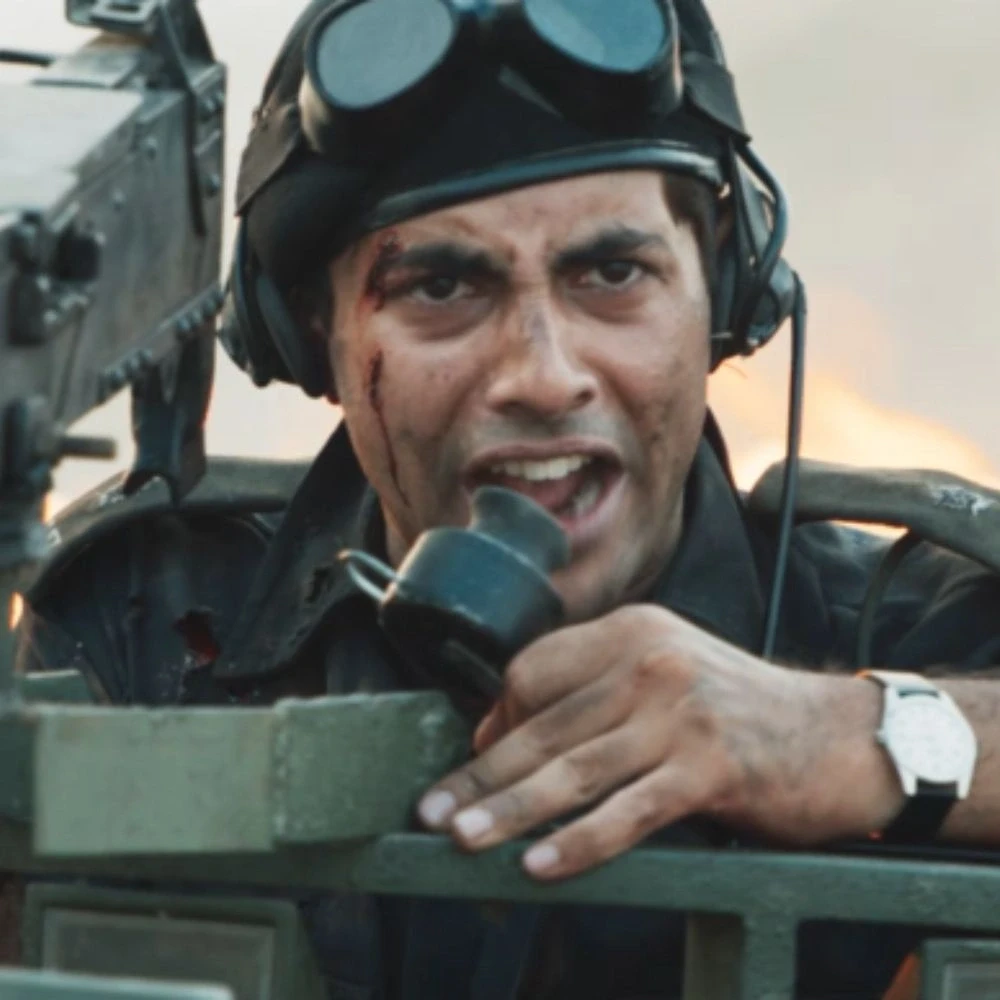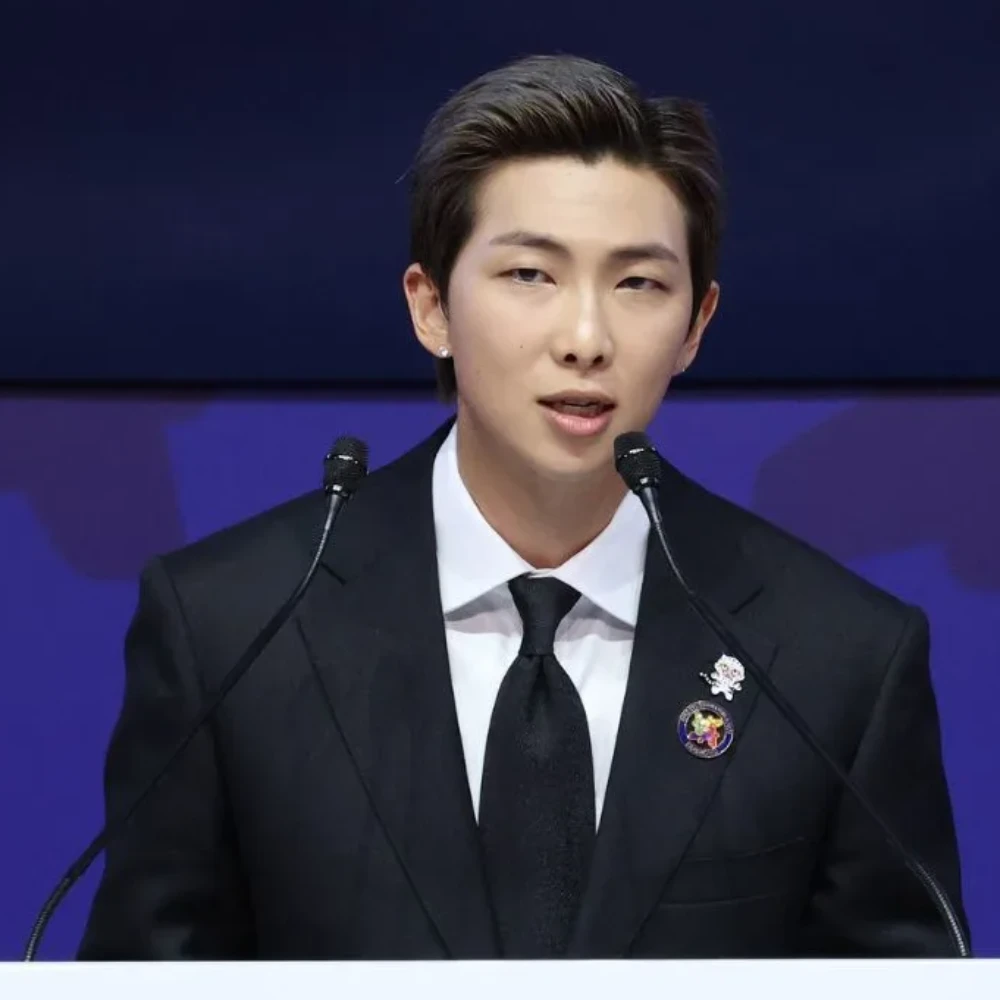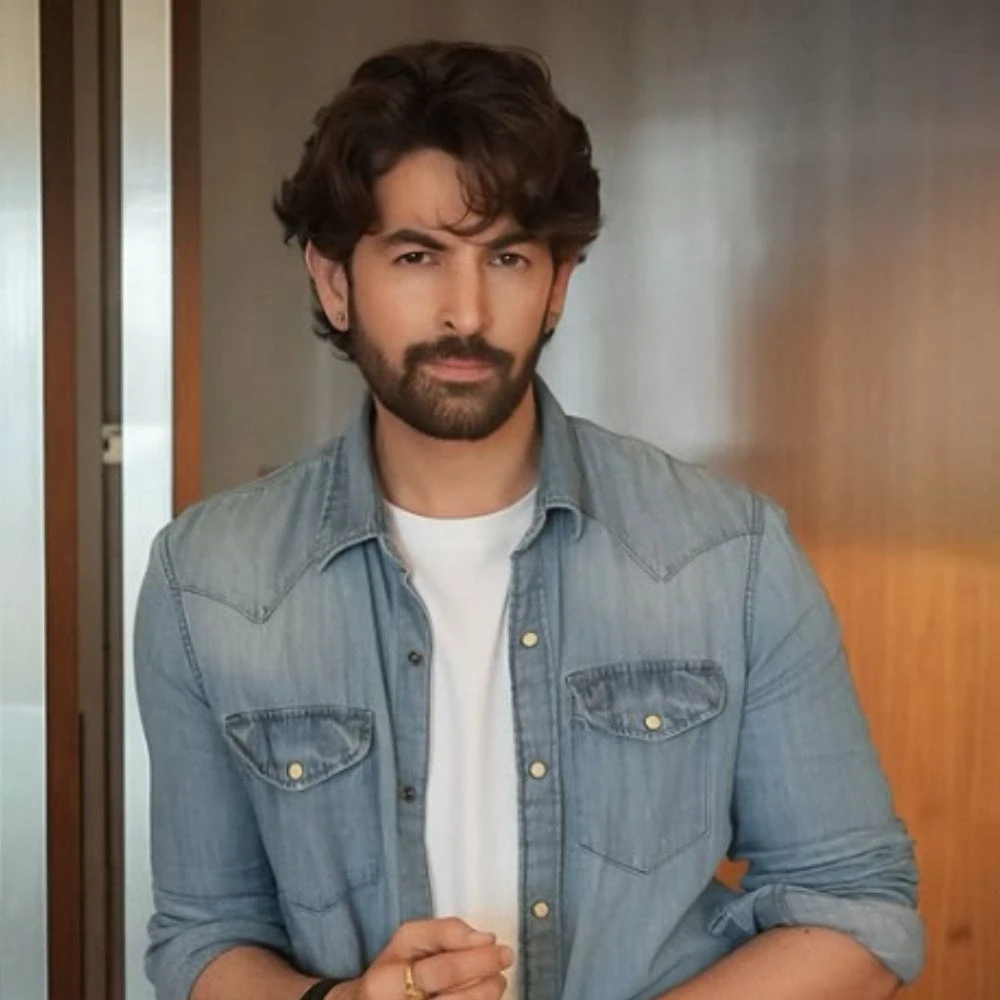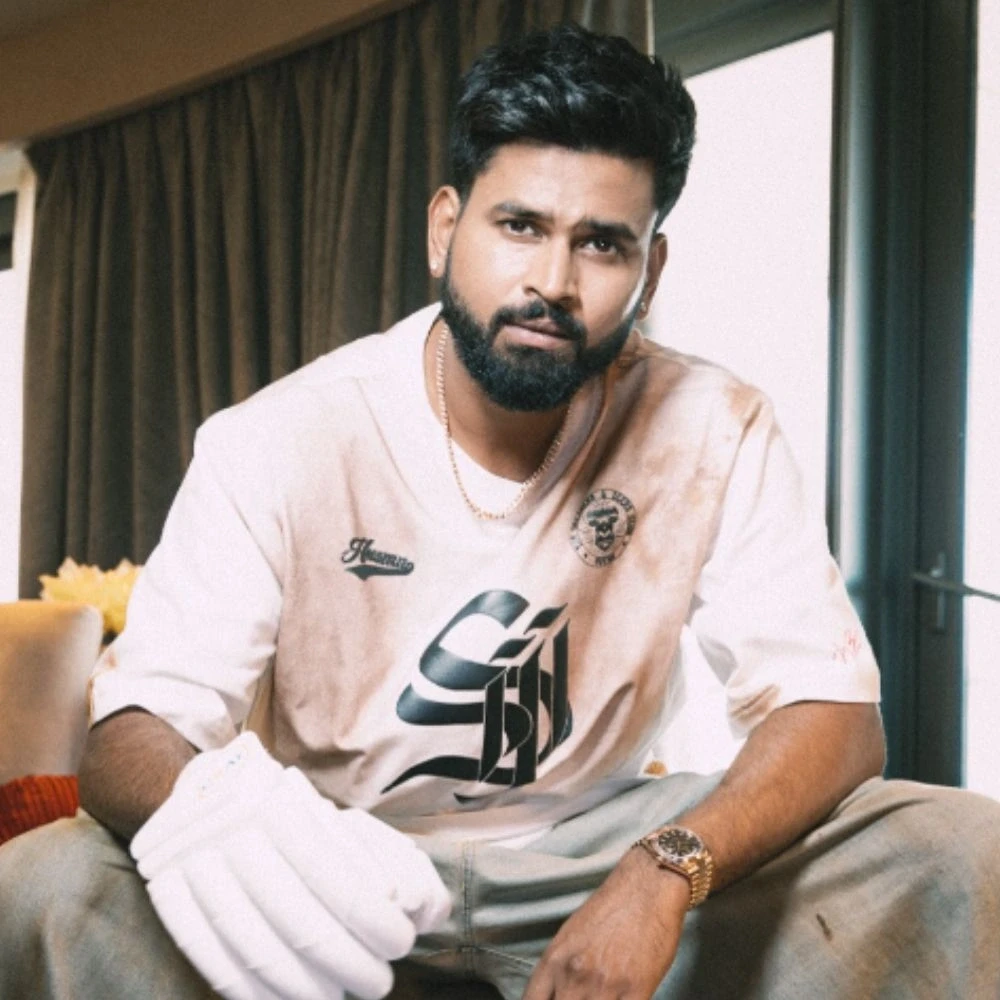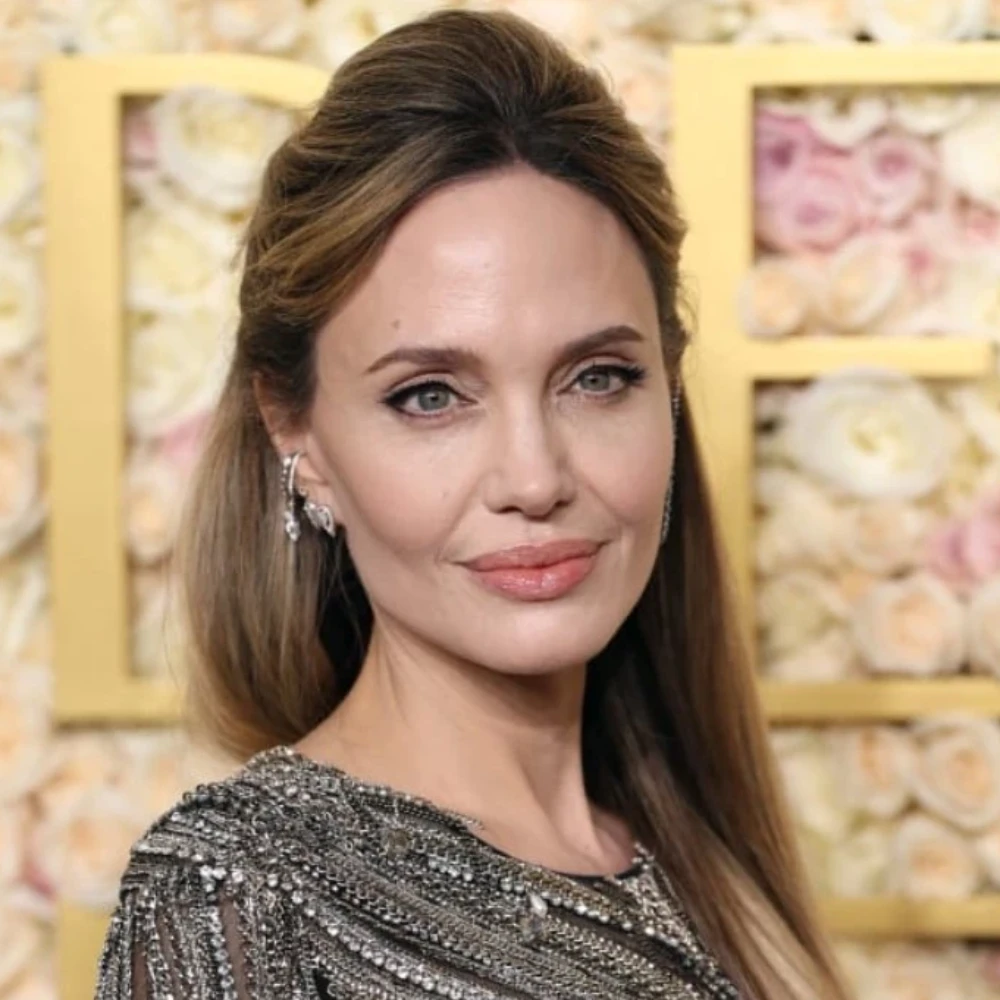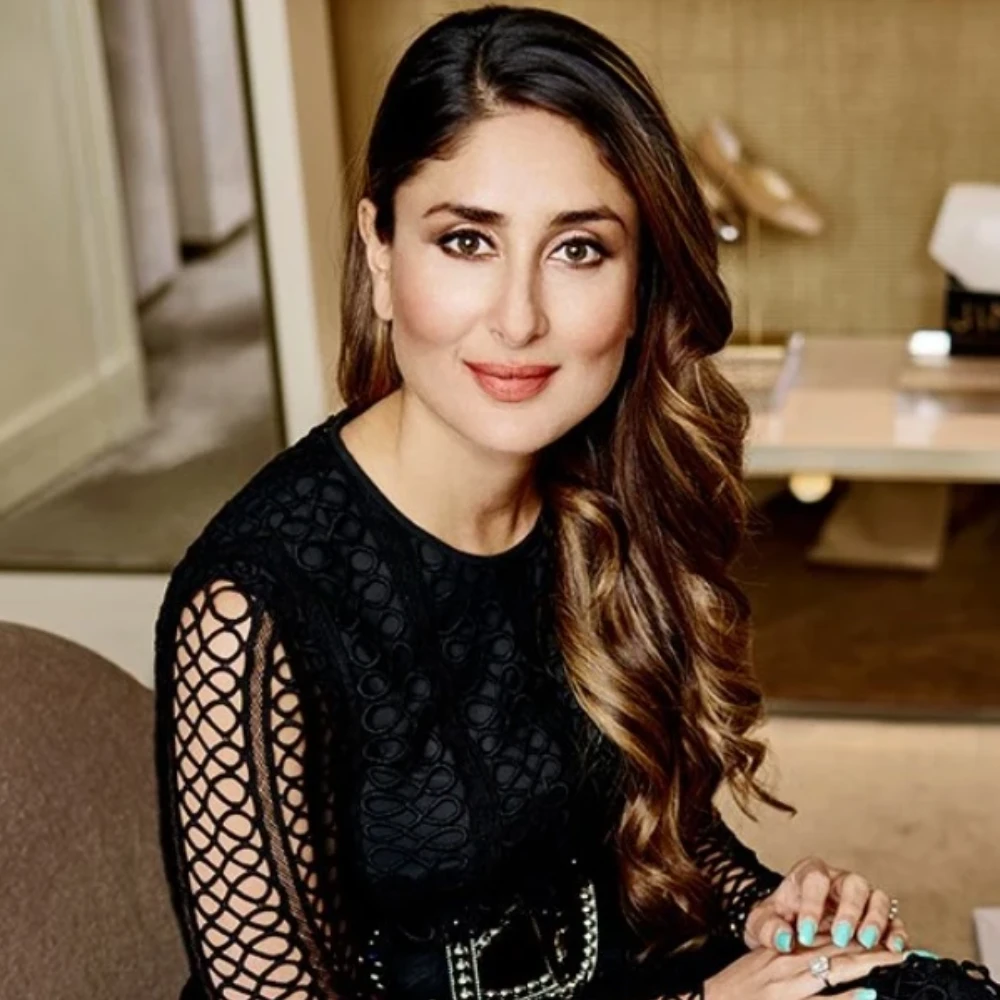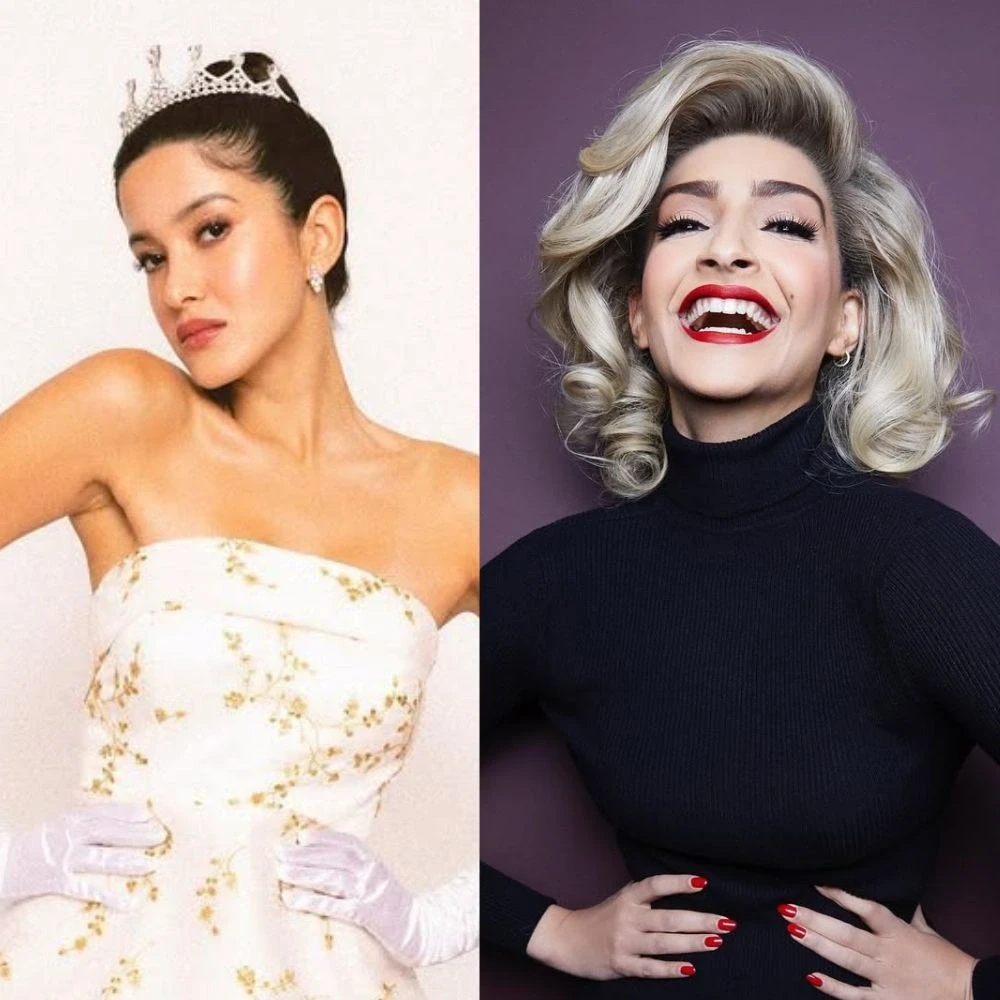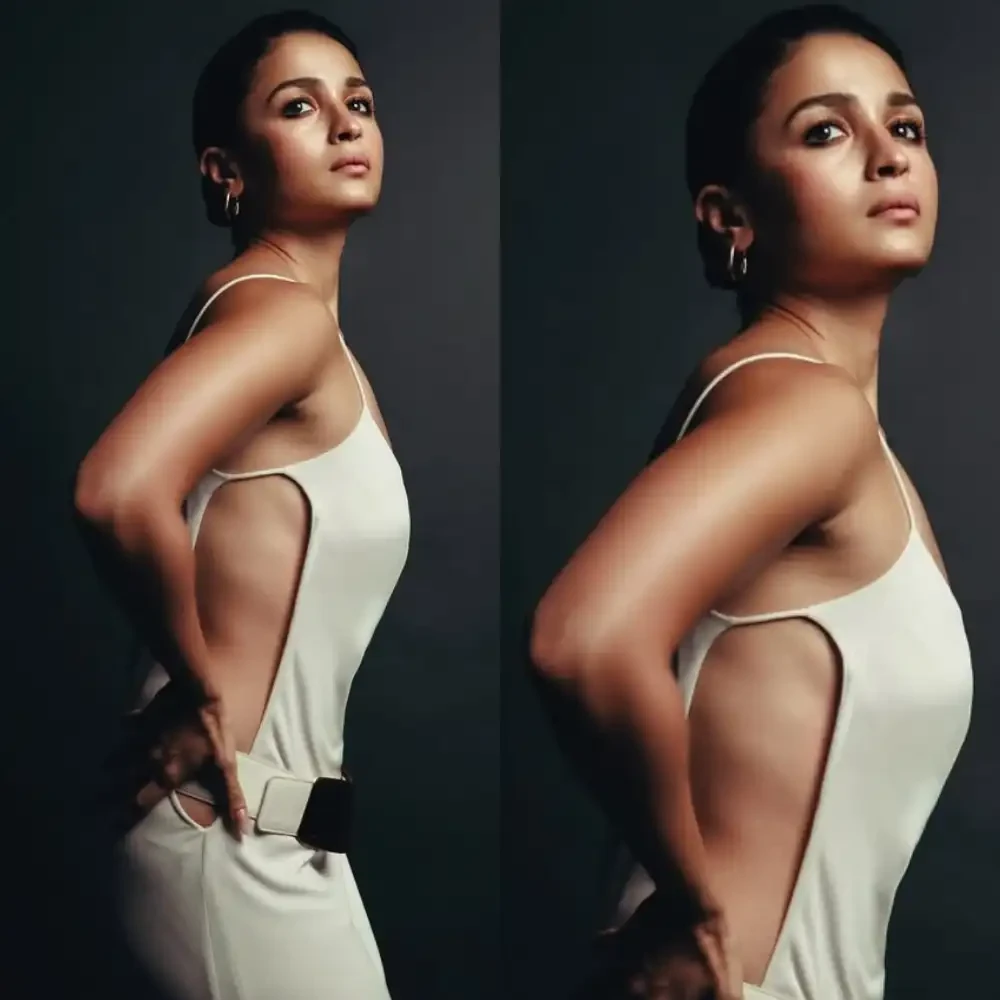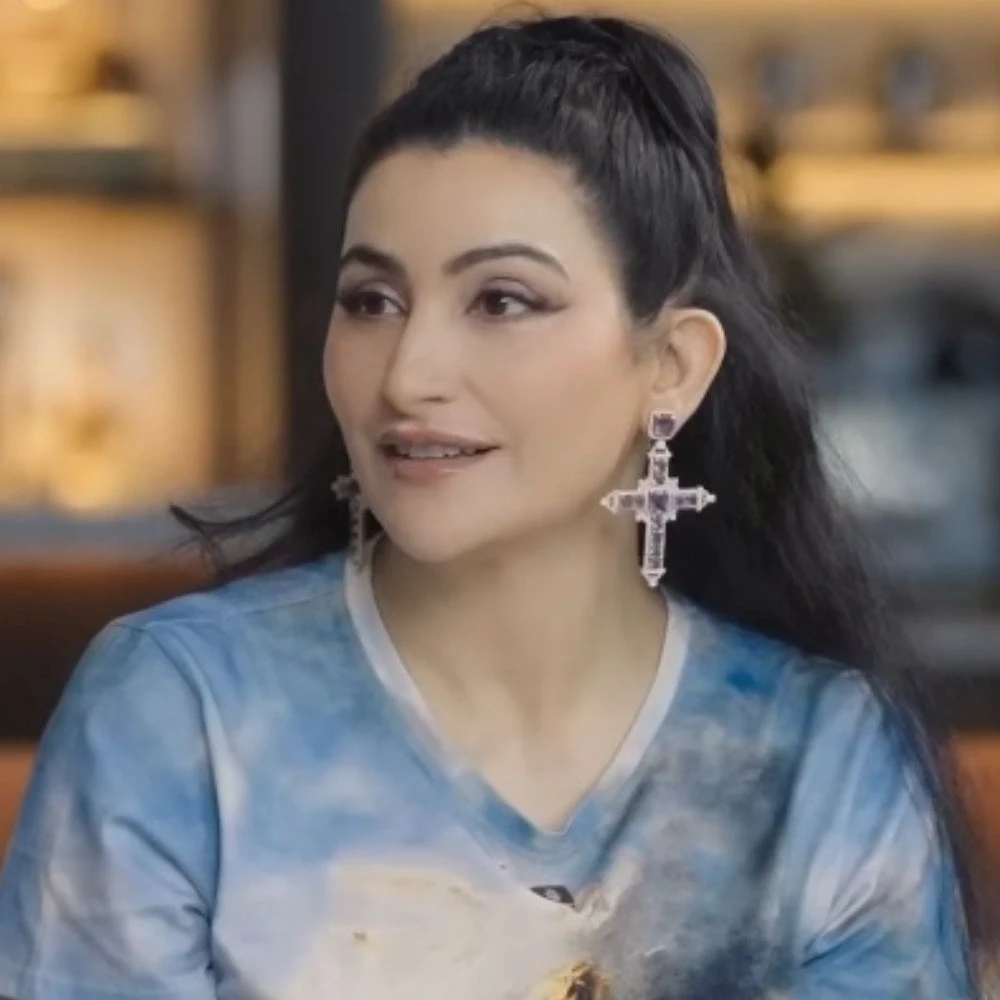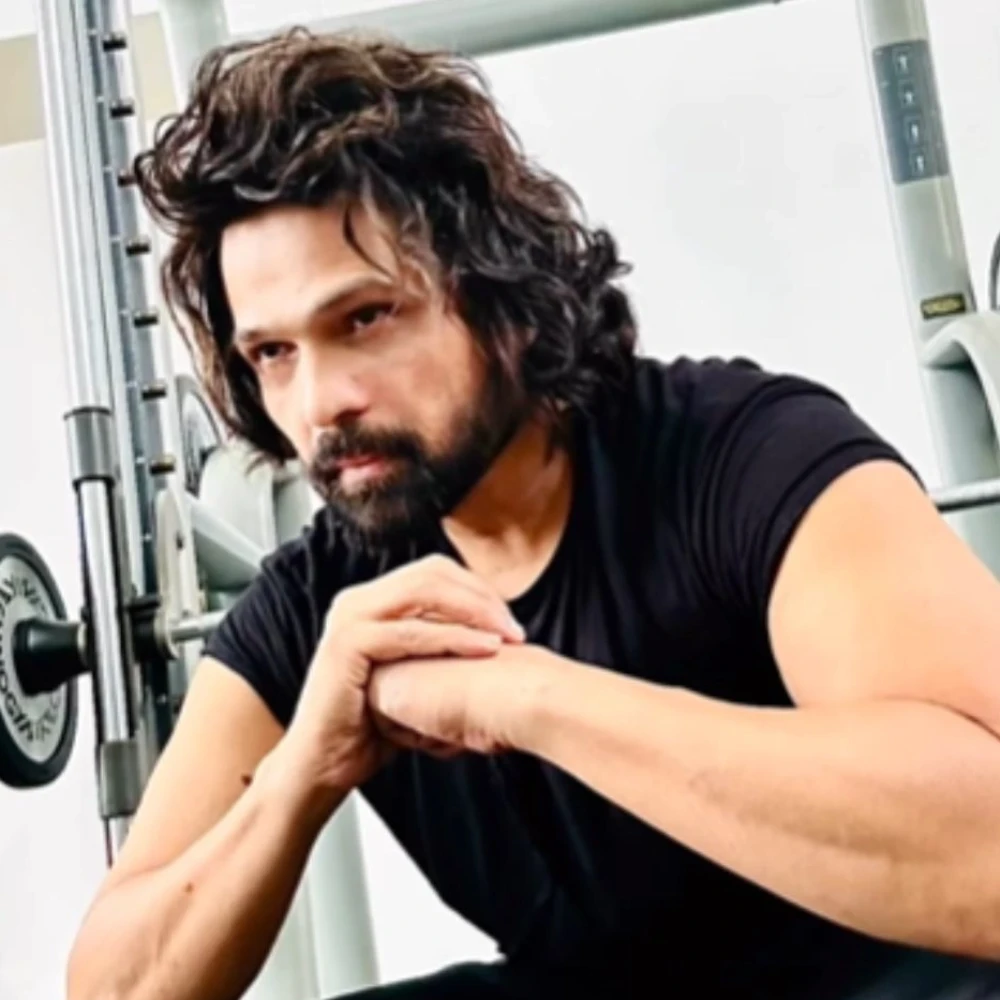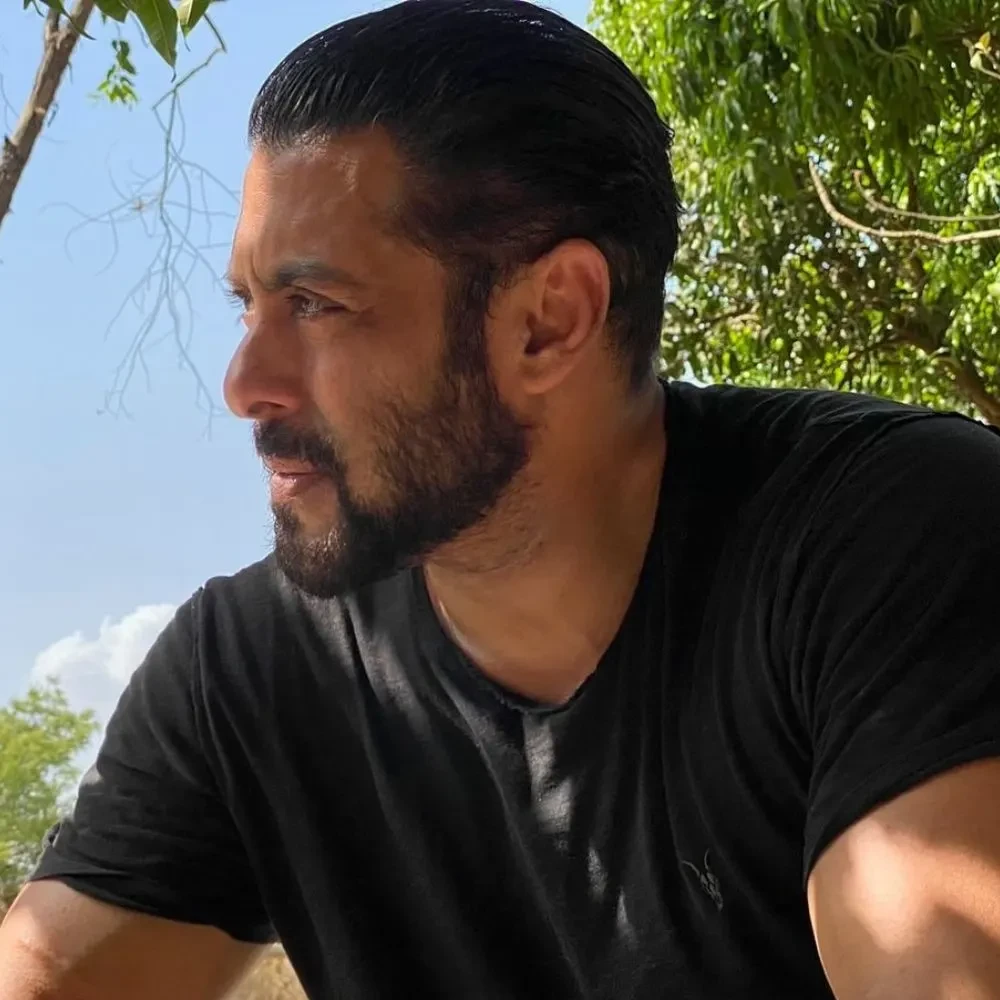Exercise for Upper Chest: 10 Effective Workouts for Everyone
For those starting a new workout routine or unsure about the machines and the weights — begin with an exercise for the upper chest to gain muscle and confidence.
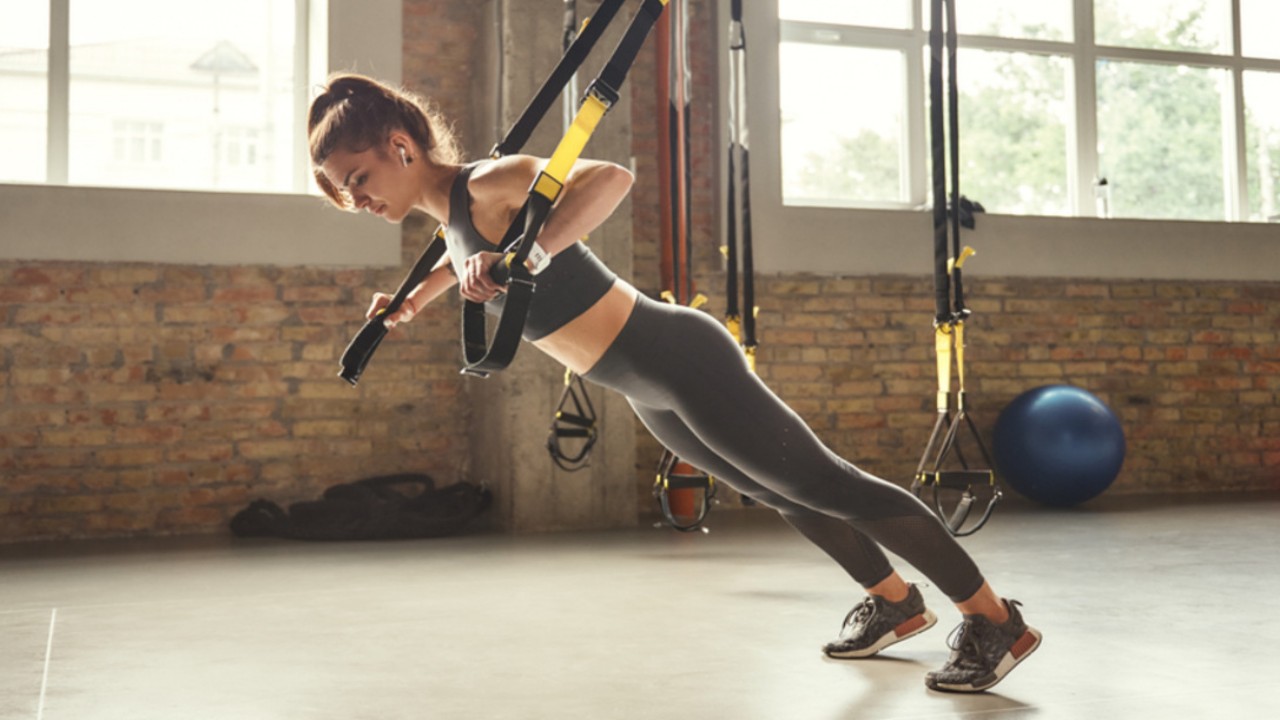
The human body is a remarkable machine that requires regular exercise. Most people do not realize the importance of strength training and exercise for the upper chest. But it is an integral part of your body, and so one needs proper workout to keep it fit. The upper chest region supports your rib cage from the front and the spine from the back. Without strong upper chest muscles, holding your neck up would become impossible.
Our contributor Mary Sabat, RDN, LD, and Ace Certified Trainer - Body Designs Ltd., says, “Having strong upper chest muscles is important for several reasons. First, it contributes to a balanced and aesthetically pleasing chest development. Second, it can enhance overall upper body strength, which is beneficial for various daily activities and sports. Strong upper chest muscles also help with shoulder stability and can reduce the risk of shoulder injuries, making it essential for maintaining good shoulder health. Lastly, a well-developed upper chest can improve posture and upper body symmetry.”
People with weak upper chest muscles often complain of pain around the shoulders and weakness in the arms (1). Look at ten easy and effective upper chest workouts to build strength here.
What Is the Upper Chest?
The upper chest is also known as the upper pectoralis major (2). It is a specific region of the chest muscles located at the upper portion of the pectoralis major muscle (2). Understanding its anatomy and how it works can help effectively target and develop this muscle group.
Upper Chest Muscle: Make-up
The pectoralis major is a fan-shaped muscle. It is relatively large, covers the upper chest, and plays a significant role in shoulder joint movements. It consists of two parts: the clavicular head (upper chest) and the sternal head (lower chest) (2). The upper chest is associated with the clavicular head of the pectoralis major muscle.
The clavicular head originates from the medial half of the clavicle (collarbone) and extends horizontally across the chest. It inserts into the humerus (upper arm bone) at the greater tubercle. The clavicular head runs diagonally, angling from the sternum towards the shoulder joint (2). When you plan to grow upper chest muscles, these are the ones you focus on.
Upper Chest Muscle: Function
The primary function of the pectoral muscles is shoulder movement. It involves moving the arm in the forward and upward directions (2). This movement is commonly seen during activities like reaching for something, throwing, or lifting things overhead. The upper chest also assists in bringing the arm across the chest, which is a horizontal movement as well as in moving the arm forward across the body (2).
Importance of Upper Chest Exercises
Exercise for the upper chest should involve shoulder flexion along with horizontal adduction or horizontal flexion movements to effectively work the upper chest. Incline benches, where the equipment is set at an angle, are efficient for targeting the upper chest (3). These exercises emphasize the clavicular head, leading to its activation and development.
It's important to note that the upper chest is just one part of the overall chest musculature. A balanced approach that includes exercises for the entire pectoralis major, as well as other muscles of the chest and shoulders, is essential for overall strength and aesthetics.
Developing the upper chest’s pectoral muscles can improve the overall appearance, providing a fuller and more balanced look. You can train the upper chest to enhance performance in activities that involve shoulder flexion and adduction, such as throwing a ball or performing overhead movements (3).
Remember to consult with a qualified fitness professional or trainer to learn the proper form and technique for targeting the upper chest muscles. By incorporating specific exercises and focusing on the clavicular head of the pectoralis major, you can develop and strengthen your upper chest. These exercises also improve your overall aesthetics and functionality.
10 Best Exercises for Upper Chest
1. Flat Bench Press Exercise
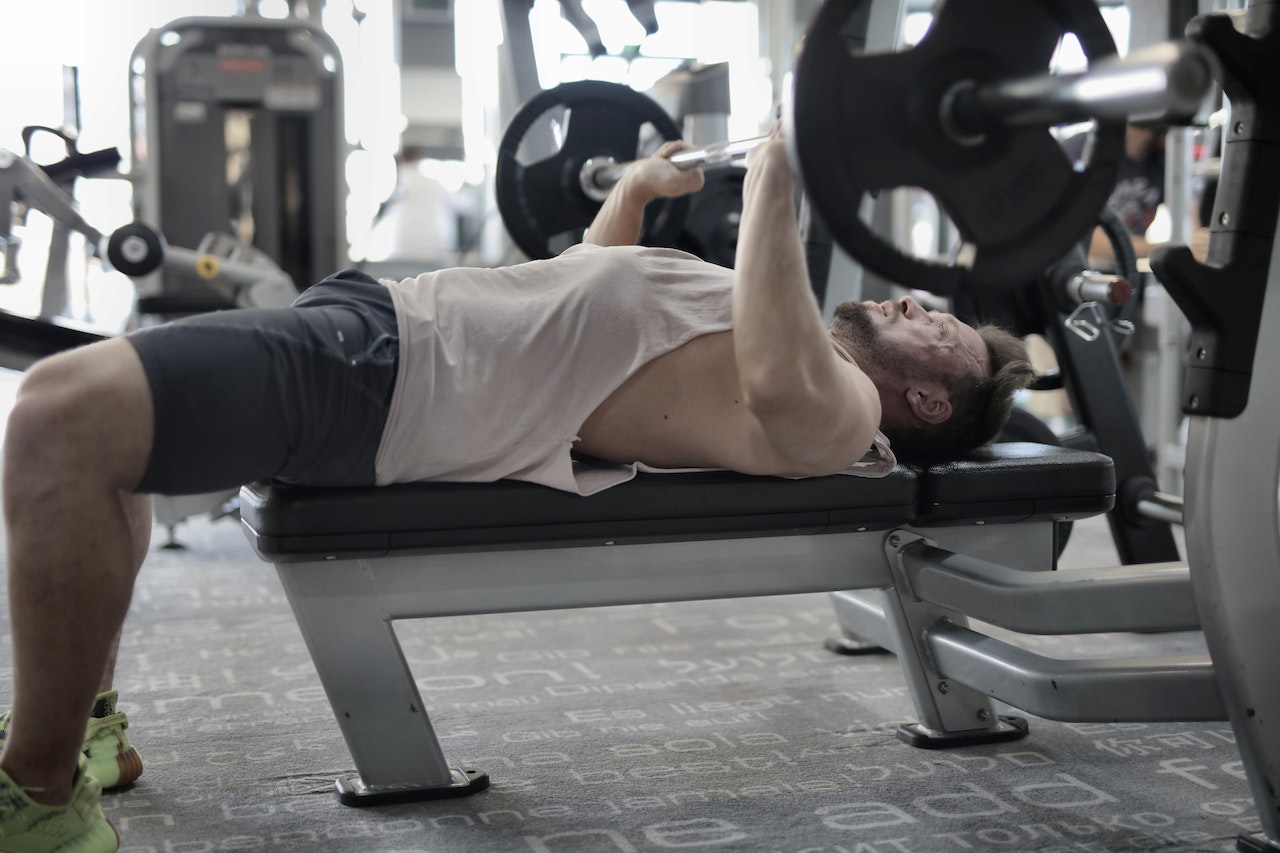
This exercise primarily targets the upper chest muscles (pectoralis major) and engages the front shoulders (anterior deltoids) and triceps. It involves lying on an inclined bench with a barbell and pushing the weight upward, focusing on contracting the upper chest muscles.
Sharing some benefits of flat bench press exercise, our contributor Mary Sabat says, “The flat bench press is a highly effective compound exercise that primarily targets the chest muscles, but also engages the shoulders and triceps. Its benefits include building chest strength and size, improving upper body muscular endurance, and promoting overall upper body stability. Additionally, it is a versatile exercise that can be adapted for various fitness goals and skill levels.”
- Set an adjustable bench at a comfortable angle of 30-45 degrees.
- Lie with your back on the bench. Keep your feet flat on the floor and hold the barbell firmly. Ensure your feet stand slightly wider than shoulder-width apart.
- Lower the barbell towards your upper chest while flaring your elbows slightly.
- Push the barbell back up to the starting position, extending your arms fully.
2. Dumbbell Bench Incline Press
Similar to the barbell bench press, this exercise for the upper chest isolates and develops the upper chest muscles. Using dumbbells over barbells allows for a more excellent range of motion and helps improve the stabilization of the muscles. It is one of the best exercises for the upper chest.
- Set an adjustable bench at a comfortable angle of 30-45 degrees.
- Sit steady on the bench while holding a dumbbell in both hands.
- Position the dumbbells at shoulder level, palms facing forward.
- Lower the dumbbells towards your upper chest, maintaining control and keeping your elbows slightly flared out.
- Take the dumbbells upwards, to the starting position, extending your arms fully.
3. Incline Push-up
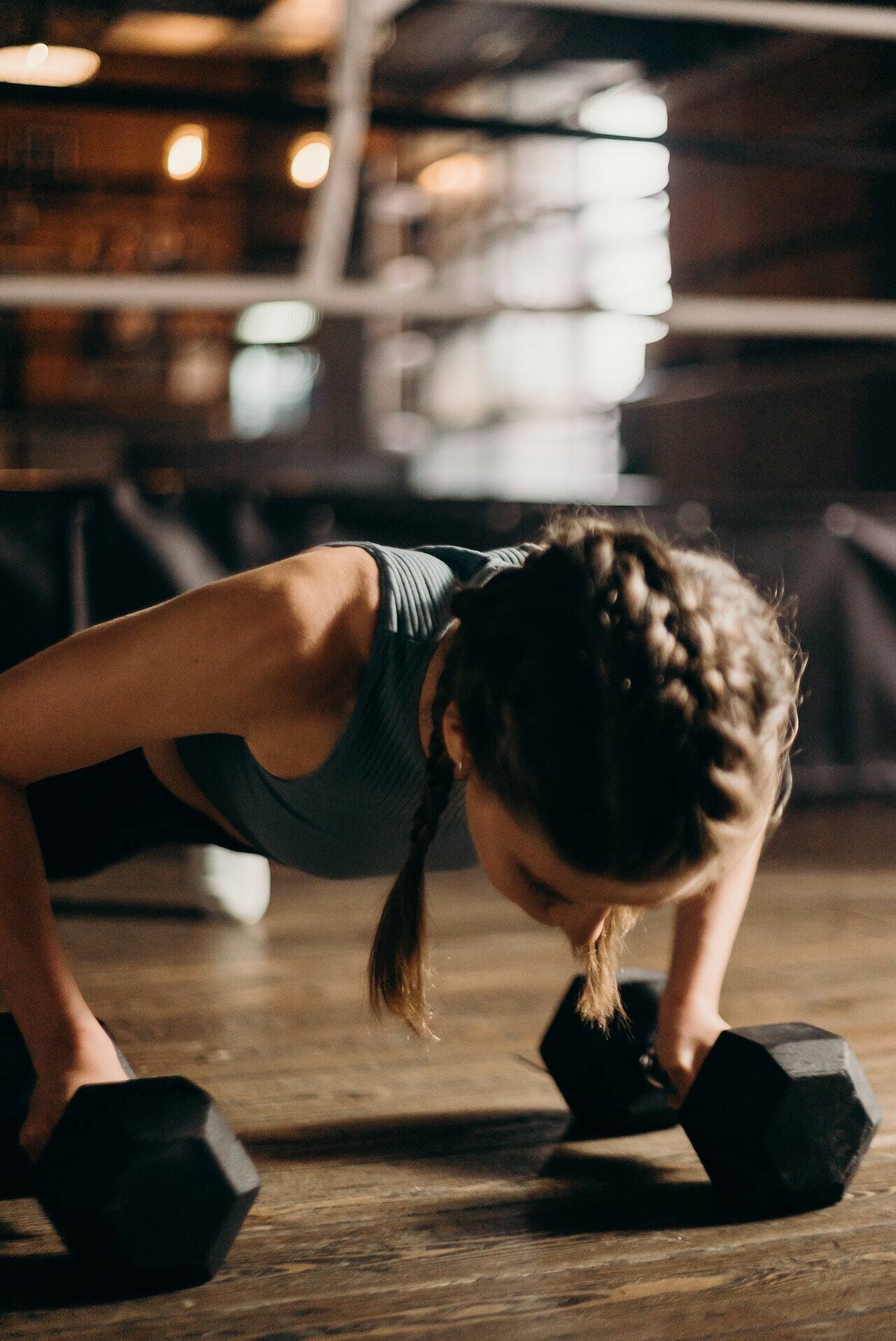
This bodyweight exercise is an excellent alternative to the bench press for targeting the upper chest muscles. By placing your hands on an elevated surface like a bench or step you can develop a strong chest. You increase the intensity and challenge the muscles in your upper chest and shoulders (4).
- Place your hands on the floor slightly wider than shoulder-width apart and position your feet on an elevated surface, such as a bench.
- Keep your body straight and lower yourself towards the bench by bending your elbows.
- Push your body back to the starting position, fully extending your arms.
4. Cable Crossover - High Pulley
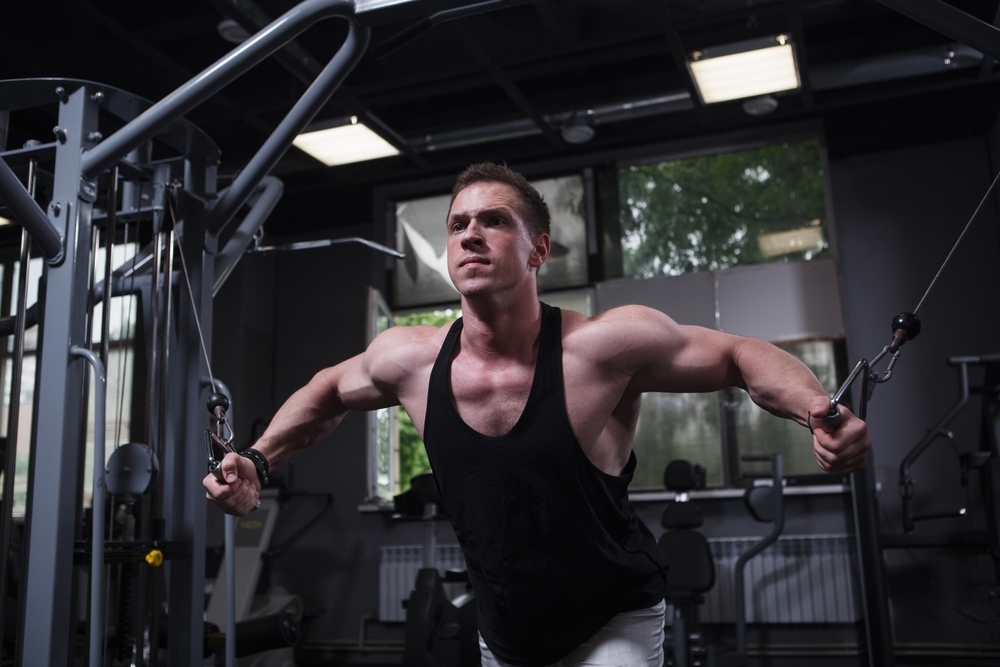
This exercise for the upper chest effectively isolates and targets the upper chest muscles using cable pulleys set to a high position. By pulling the cables downward and inward in a crossing motion, you create tension on the upper chest muscles, promoting muscle growth and definition (5).
- Set the cable pulleys to a high position on each side.
- Stand in the center of the cables and grab the handles. Keep your palms facing forward and keep a firm grasp.
- Take a step forward with one foot and slightly lean forward.
- Bring your hands downward and inward, crossing them in front of your upper chest.
- Return to the starting position by reversing the movement.
5. Upper Chest Push-ups
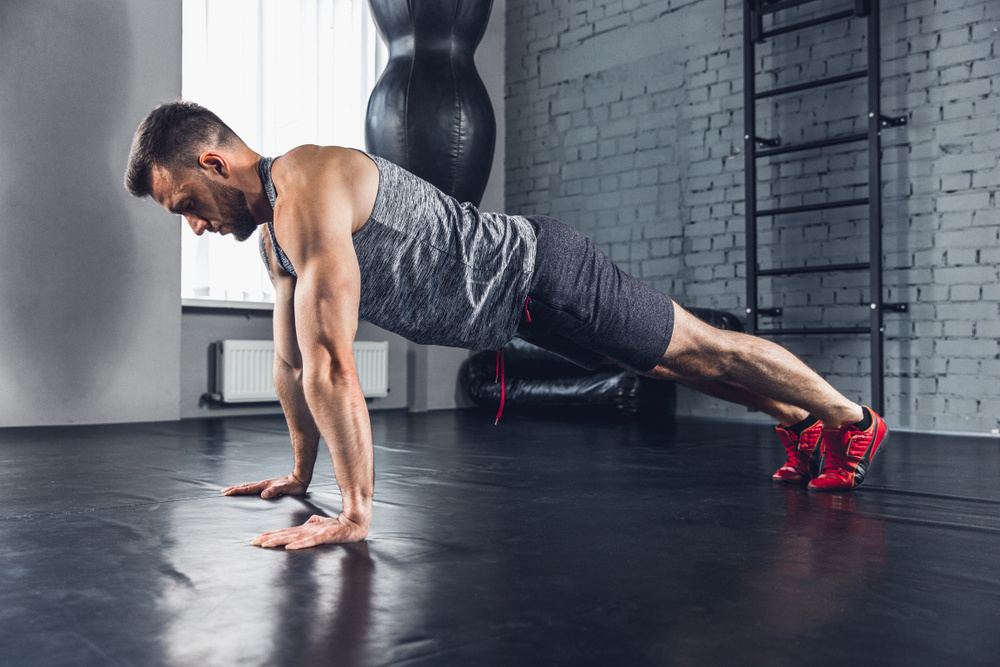
This variation of the traditional push-up targets the upper chest muscles explicitly and helps improve shoulder stability (4). After lowering your body towards the floor, you protract your shoulder blades and round your upper back, engaging the upper chest muscles in a more focused manner.
- Assume a push-up position with your hands slightly wider than shoulder-width apart.
- Lower your body towards the floor slowly by bending your elbows.
- At the bottom of the push-up, push your body back up and round your upper back by protracting your shoulder blades.
- Return to the starting position and repeat.
6. Upper Chest Cable Fly – Standing High Pulley
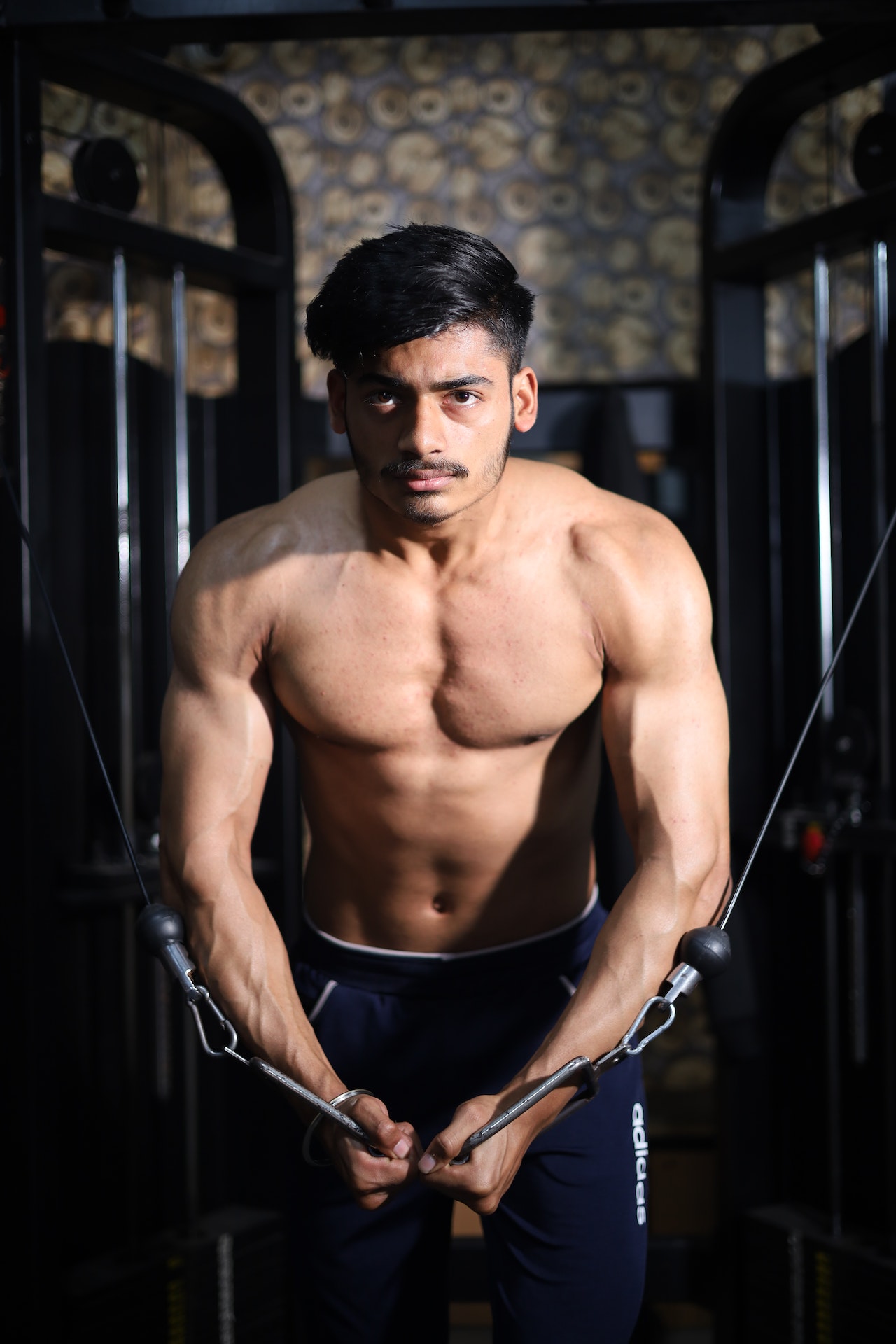
This exercise focuses on the upper chest muscles and involves standing in the center of cable pulleys. By bringing your hands outward and downward in a controlled motion, you target the upper chest muscles, creating a muscular contraction (5).
- Set the cable pulleys to a high position on each side.
- Stand in the center of the cables and hold the handles with your palms. Keep them facing forward with a neutral grip.
- Take a step forward with one foot and slightly lean forward.
- Bring your hands outward and downward, focusing on squeezing your upper chest.
- Return to the starting position by reversing the movement.
7. Dips for Upper Chest
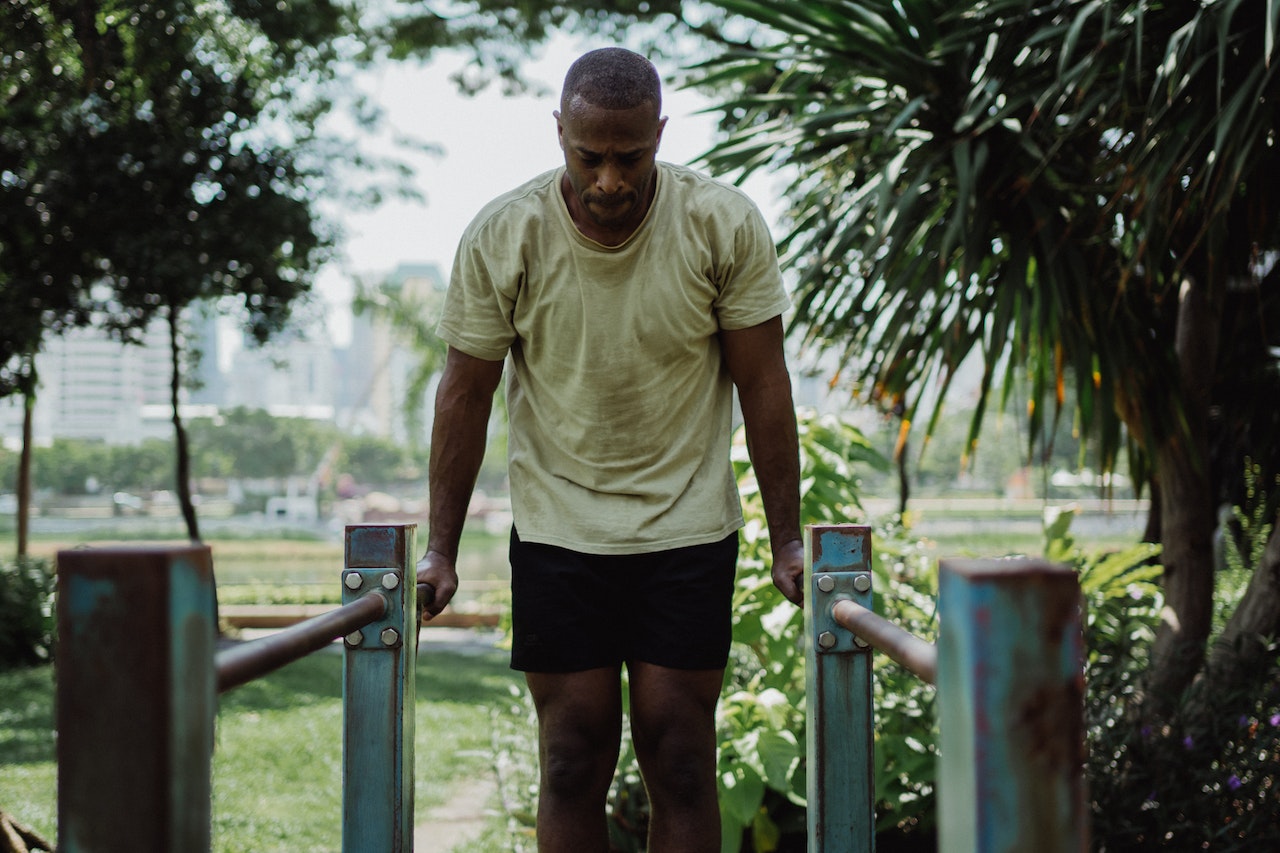
Chest dips primarily target the chest muscles, including the upper chest, along with the triceps and shoulders. By supporting your body weight on parallel bars and lowering yourself down, you activate the upper chest muscles to stabilize and push yourself back up. It can be called the best home exercise for the upper chest (6).
- Hold onto parallel bars or use dip bars with your arms fully extended and your shoulders down.
- Lower your body by bending your elbows and leaning forward slightly.
- Dip down by bending your knees until your upper arms lie parallel to the floor or slightly below.
- Push yourself back up to the starting position by extending your arms.
8. Dumbbell Pullover
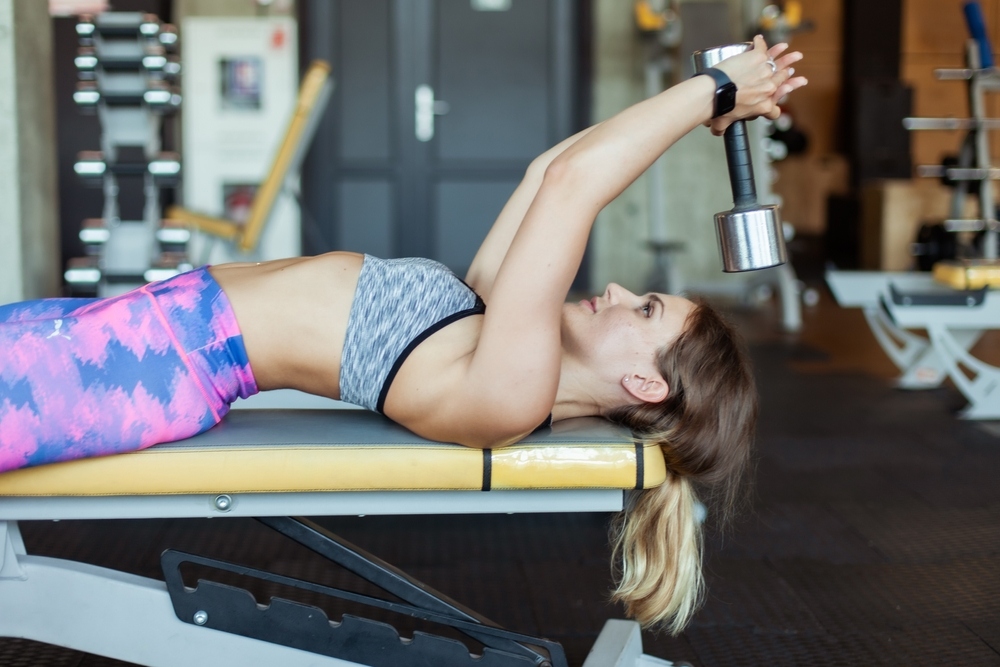
This exercise for the upper chest primarily targets the upper chest muscles while also engaging the back muscles and triceps (3). By lying on a bench on your back and holding a dumbbell overhead, you lower the weight behind your head, feeling a stretch in the chest, and then bring it back up, engaging the upper chest muscles for constant tension.
- Lie on a bench with only your upper back and head supported.
- Take a dumbbell and hold it tightly with both hands and extend your arms overhead.
- Keep a slight bend in your elbows, and lower the dumbbell behind your head — you should feel a stretch in your chest and shoulders.
- Raise the dumbbell back to the starting position, engaging your upper chest muscles.
- Gradually move to heavier weights for better results.
9. Barbell Pullover
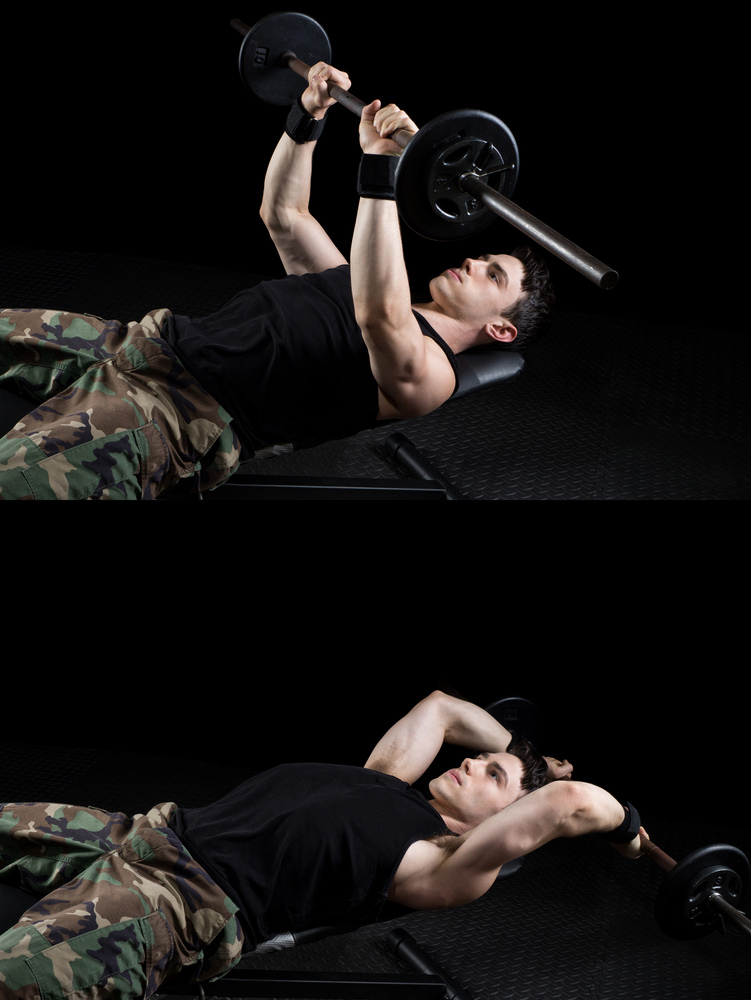
Similar to the dumbbell pullover, this exercise targets the upper chest muscles while also engaging the back and triceps. By using a barbell instead of a dumbbell, you can perform the movement in a controlled manner, focusing on the upper chest contraction (3).
- Lie on a bench with only your upper back and head supported.
- Hold a barbell with both hands; arms extended over your chest.
- Bend your elbows slightly and lower the barbell behind your head, feeling a stretch in your chest and shoulders.
- Raise the barbell back to the starting position, engaging your upper chest muscles.
10. Single-arm Cable Crossover – High Pulley for Upper Chest
By using a cable pulley set to a high position, this exercise targets the upper chest muscles individually. By pulling the cable handle across your body, you engage the upper chest muscles and create balanced development on both sides. You can incorporate this as regular exercise for the upper chest (5).
- Set the cable pulley to a high position.
- Stand to the side of the cable machine and grasp the handle with one hand.
- Take a step forward. Make sure you use the opposite foot and slightly lean forward.
- Pull the handle across your body, bringing it down and across your upper chest.
- Return to the starting position by reversing the movement.
Conclusion
Exercise for the upper chest is never exclusive to other body parts. As this region sits above your abs and back muscles, you need to keep it strong. A well-built upper body shows your interest in exercise and gives an appealing look to your attire. As these muscles are also used to lift the arms, exercising them regularly helps with mobility. From the exercises above, you can either select one and do it in repetition or put together a calendar for yourself. Either way, mixing workouts gives a better result and helps build muscle memory.
Contributor: Mary Sabat, RDN, LD, Ace Certified Trainer - Body Designs Ltd.
ALSO READ: 20 Core Strengthening Exercises for Toned Abs And Core





 JOIN OUR WHATSAPP CHANNEL
JOIN OUR WHATSAPP CHANNEL